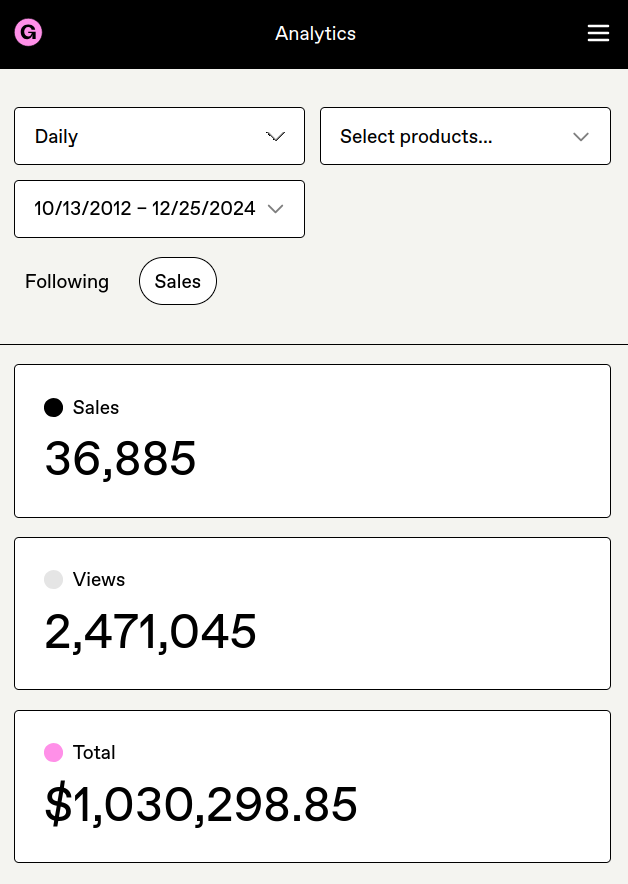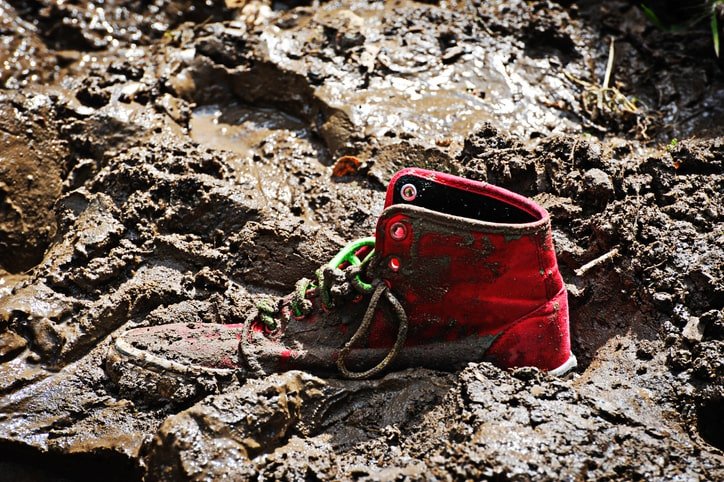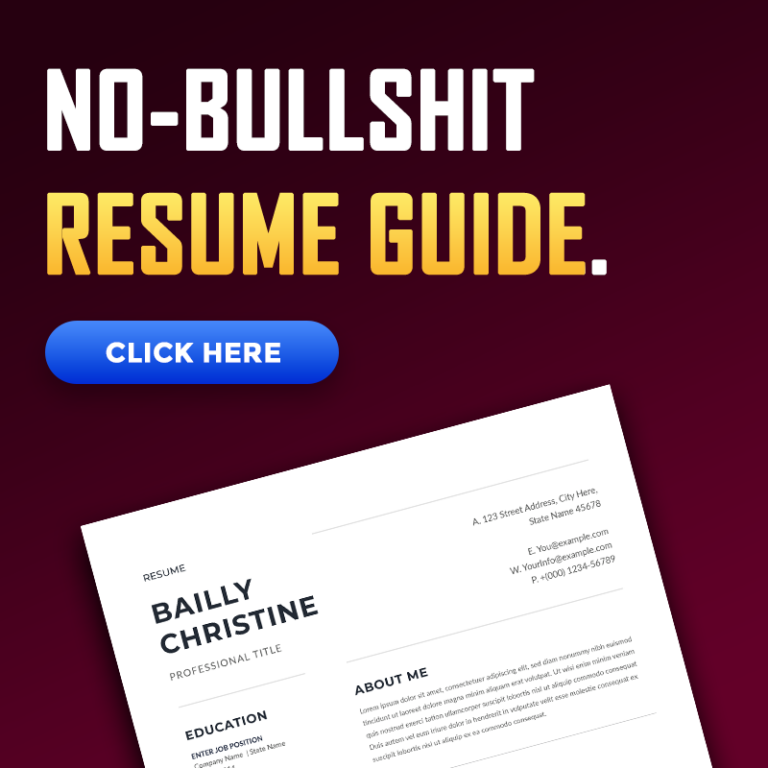I got into a bit of an online argument about rep ranges. I normally don’t fight people online but if you’ve got 40k followers, come at me. I will take the bait 100% of the time because it’s free exposure for me. Guerrilla marketing.
The original tweet compared 15 sets of 2 reps to 3 sets of 10 reps and insinuates that the former is “better” because you end up lifting heavier weights for the same number of reps.

Basically I said that both approaches will produce the exact same growth in the long term and that low rep ranges are likely to injure you.
Of course this is the internet so the response I got was “you are wrong and all your followers are fake” (I wish I was joking) and this…

Basically this guy’s rationale for recommending ultra low rep high risk bench pressing goes something like this:
“Having a business is higher risk than a job and makes more money, therefore high risk training will make me more muscle gains”.
I wish I was joking but unfortunately I’m not.
This guy has 40,000 followers and he’s out here telling people to do 15 sets of 2 reps. The internet is so damn stupid.
I’m going to explain to you why you should avoid ultra low rep ranges and tell you the one situation where using it makes sense.
Genetic Limit of Muscle
No matter what you do, you have a genetic limit to how much muscle you can have. Hormones and steroids help push this limit further but the limit still exists. You cannot become infinitely muscular.
Somehow people get this with everything else but refuse to believe it when it comes to muscle growth.
There are genetic limits to all physical things.
- Your vertical jump
- How fast you can run
- How tall you can get
- EVERYTHING, including how much muscle you can gain
With regards to muscle gain, you gain the most in your first year of proper training (newbie gains), then less in your second year, then even less in your third year, and then gains keep reducing and become negligible over time.
Lyle McDonald estimates:

In other words, it’s logarithmic growth. It takes exponentially more effort to get the same amount of growth as time goes on.
To put it visually, it looks like this:

There will come a point in your training career where you will have to have a full year of perfect training and diet only to gain ~1kg of muscle.
Of course this is not worth it for anyone who isn’t competing in powerlifting or bodybuilding, and effectively the vast majority of people will get all of the muscle growth they’re going to get in their entire life within 4-5 years of proper lifting (lazy training, skipping workouts, doing things that cause injuries, etc. will make it take a lot longer).
After that, all you can do is maintain your muscle mass (or take anabolic steroids to push the limit higher but that’s beyond the scope of this article).
Stimulus
Training is the stimulus that triggers muscle growth. More stimulus leads to more growth but it is also diminishing.
There is a maximum amount of muscle you can grow per workout. Let’s say it’s 100 units.
As the amount of stimulus increases, the growth increases, tops, and then drops off. What that means is that it grows logarithmically at first but instead of going up forever it actually touches the top and then starts falling off.
Let me explain this with an example. Let’s say you’re training to failure in a moderate rep range (6-12 reps).
If doing 1 set to failure gets you 25 units of growth, then 2 sets to failure will get you to 45 units, 3 sets to failure will get you to 60 units, 4 sets of failure will get you to 72 units, 5 sets to failure will get you to 82 units, 6 sets of failure will get you to 90 units, and so on. Say you get the entire 100 units at 8 sets to failure.
The numbers are made up but you get the point. More training leads to less and less additional growth.
If you do more than that you actually make less gains because you cause so much muscle damage/inflammation that the body spends recovery working to fix that than on additional growth.
In other words, after a point, you get negative stimulus. This is often called junk volume.
This is different from the asymptote of your genetic limit, because there by doing more, you get more results. They are negligible but not negative.
Hypertrophy chart per training session looks like this:
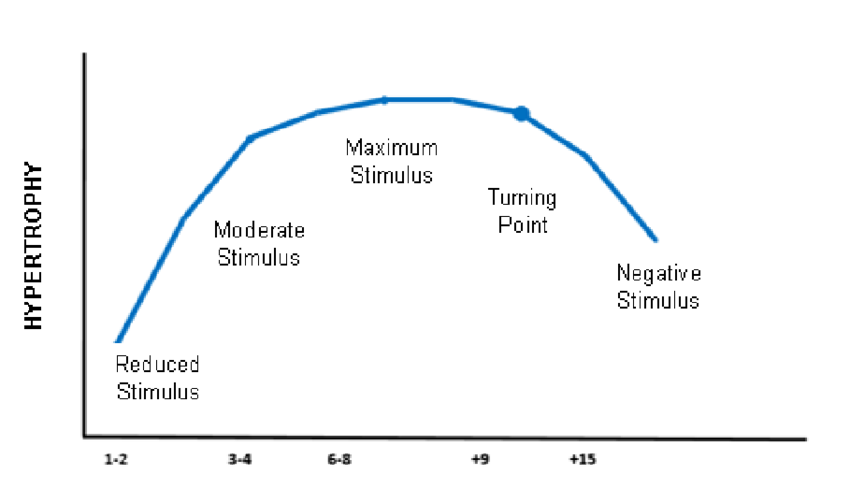
There’s different ways you can try to measure stimulus, like number of sets, total tonnage, effective reps, etc. and that’s beyond the scope of this article.
The point is that:
- There is a minimum volume you need to get any growth
- There is an optimal volume where you get the most bang for your buck
- There is a maximum effective volume where you get nearly 100% of the possible growth from a workout
- And any volume beyond it either does nothing or provides negative stimulus
Settling The Rep Range Debate That Prompted This Article
So what is “better” for growth – 15 sets of 2 reps or 3 sets of 10 reps?
The StrengthDebates guy says the former and again his rationale behind it is that taking more risks leads to more financial gains, therefore taking more risks in the gym will lead to more muscle gains.
Which is ridiculous especially since he sells training programs (careful whom you trust).
The reality is that both approaches produce the EXACT same muscle growth over time. I mean the EXACT same.
Yes 15 sets of 2 reps will provide a higher stimulus per workout from the extra tonnage and you will gain a bit more muscle per workout. No one would doubt that.
3 sets of 10 will also make your muscles grow. Almost as much because extra stimulus is logarithmic at first.
In fact the growth would be almost identical (if not more) if you do 2 exercises for 3 sets of 10. And most people training with 3 sets of 10 are not doing just 1 exercise.
But let’s be charitable and say that lots of low rep heavy sets produce a bit more growth per workout.
What happens 5 years down the line with both approaches?
Both approaches lead to the exact same growth. The EXACT same.
Because both approaches get you to hit your genetic potential.
Even with our charitable assumption of the low rep sets producing slightly better results, the best case scenario is that you hit your genetic limit in 4.5 years instead of 5 years.
A bit faster but in 5 years, you’re both in the same place.
You are not getting “more muscular” by pushing very heavy weights for very few reps. You’re gaining the same amount of muscle in the long run.
Risk and Reward
There’s more to the answer than just growth. The other factor is RISK.
The barbell bench press is not a risk free lift. You can lift heavy weights on this exercise.
Lifting very heavy weights that are close to your capacity on the bench press can easily get you injured. Moderate weights for moderate rep ranges (6-12) are much safer even when you are fatigued because it’s easier for you to control.
If you are benching for very low reps like 3 and less, you are putting yourself at risk of injury whether you like it or not.
When the bench press goes wrong, it tends to produce massive injuries that take a long time to heal.
How long does a pec tear take to heal? How long does a torn rotator cuff take to heal?
It takes fucking forever (often you need surgery or it never heals) and even when it does heal, you are never at 100% again for the rest of your life.
Even after a bad shoulder injury heals, there is scar tissue formation. Which means you always have to be careful for the rest of your life. You need to do a complicated warm up routine every time you train or play a racket sport, etc. or risk it happening again.
You are never the same again.

Personal story: Why I stopped playing Tennis
I fucked up my shoulder once (Supraspinatus tendonitis) from heavy upright rows with not so great form. It was some weird exercise that combined upright rows and lateral raises or something like that. I was a dumbass teenager.
I used to play tennis for many years. I played since I was 10. Maybe younger. I even competed once (and lost – fun story).
I can’t play tennis again. Why?
Because my supraspinatus starts getting inflamed again after I do a couple of tennis serves. Even after 10+ years, anti-inflammatory medications, and months of physiotherapy.
Tennis serves are overhead and my shoulder still impinges and hurts for the entire day if I play tennis. Rehab and warmups make it better but it’s still there.
This is why I play Squash and sometimes badminton now. Squash is largely underarm and badminton doesn’t require much force.
I can never play competitive tennis again because I fucked my shoulder. The shoulder never fully recovers after a proper injury.
Most people have no business lifting in the low rep ranges
You get nothing by benching in the low rep ranges except more injury risk. You get “stronger” but so what? The muscle growth is the same.
The best case scenario is that you get to your genetic potential a few months earlier. The worst case is that you get a pec tear or two and it takes you many extra years to recover.
Clearly for the vast majority of people, you have no business benching in the low rep ranges. Yes you can build the same amount of muscle doing it (and lots of people do) but why do it if safer ways are possible that get you the same growth?

It’s largely an ego thing with men. Oh look how heavy I am lifting. I am the strongest. Young men are so fucking stupid.
No one cares how much you can lift. Except maybe other bros. You lift for improving your own health and fitness, and getting injured (especially a major shoulder or pec injury) is the opposite of that.
Who Should Lift in The Low Rep Range
The only time it makes sense to hit the bench in the very low ranges is when you’re a competitive powerlifter. A powerlifter has to perform a 1 rep max on competition day.
Training on the very low rep ranges help you practice the lift at very heavy weights. 1 rep maxes are heavily technique dependent.
Practicing lifting with close to maximal weights makes it less likely that your technique breaks during the competition lift and you fail your lift.
Basically the low rep ranges help you develop practice with expressing maximal strength. Which is useful for powerlifters but mostly vanity/ego for everyone else.
Pour Conclure
The big takeaway is that training is not that complicated. There is no magical way to train that works much better than the basics.
All you need to do is:
- Push yourself, be consistent. The easiest way to get nowhere is to skip training.
- Pick exercises that target the muscle well and do them in some moderate rep range (could be 6-10, or 8-12, or whatever. More than 6, less than 12.).
- Moderate rep range because it’s the happy medium. The injury risk is low and you can reliably go to muscular failure or close. Low rep ranges increase injury risk, and high rep ranges can make you give up out of cardiovascular exhaustion not muscular failure (eg. 30 Rep sets of Squats – fuck that).
- Do enough sets that you get a stimulus but not so many that you annihilate the muscle. 6-12 sets per week per muscle group are perfect. The lower number is for older people and those with lower recovery abilities (high allostatic load / stressed out with work, exams, going through divorce, etc.).
- Good nutrition, sleep, etc.
- You will eventually reach your genetic limit/maximum muscular potential. There is no need to stress out too much about eeking out every single gram of muscle growth per workout.
Some Personal Experience and What I Would Do Differently
All this stuff is things that seem obvious when written down but took me many years of pushing my limits and many injuries to learn. Especially the last point on that list.
I would obsess with trying to get the most from my workouts. I would train so much that I was always so fatigued. Many cardio sessions per week, lots of training – I would wreck my body.
Sometimes I would cancel on girls because I was just so fatigued and I knew I wouldn’t get a proper erection. No joke.
Girls would message me and I would tell them not today. I would tell them I was out but the reality was that I had a soul crushing leg workout and had no energy left for anything else.
I was always either tired from training, or I was injured from it. I was dumb in that way in for much of my 20s. The injures were largely coming from the deadlift and the barbell squat.
If I could do it all over again, I would do far less work. Maybe half my training volume. I would get to the exact same place.
It would have taken a bit longer but so what? I would just not be so tired all the damn time from training and cardio.
And I would drop the deadlift and barbell squat much sooner. I would have avoided almost 95% of gym injures I had this way.
The taller you are, the worse of a tool the barbell is. Injures you more than it helps you grow. Tall people levers usually aren’t great for barbell lifting (long arms, long femurs, etc.). It can work for them (plenty of examples exist) but usually it doesn’t. You just get injured when the weight is sufficiently heavy.
I wasted a ton of time by getting injured over and over again… despite training with good form (I had barbell training coaches look over my form, even SSCs). I wasn’t a lemon – I was trying to figure out why it wasn’t working for me. But it just didn’t work.
But I stuck to it because it was “more masculine”. Only pussies don’t deadlift. Only lame people did the leg press.
Even though the leg press produces superior results for leg strength and size. I was just so stupid.
But hey, you get to learn from my mistake so you don’t repeat it. Fuck being tired all the time. And fuck being injured.
So I guess the main 3 takeaways I have for myself and you are:
- Do enough to get most of the growth and call it a day.
- Avoid exercises that injure you despite good form.
- Avoid low rep ranges where you can easily get a big injury if things go wrong.
– Harsh Strongman

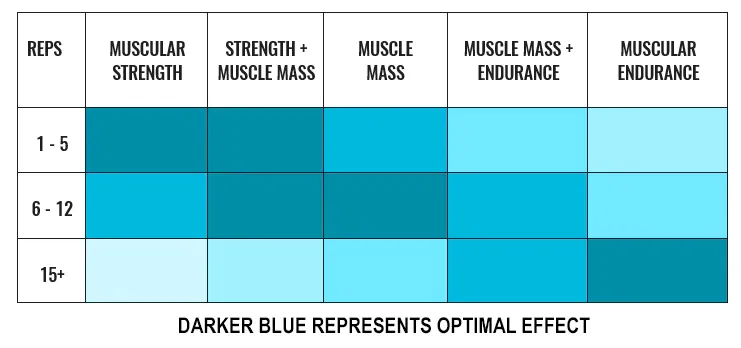


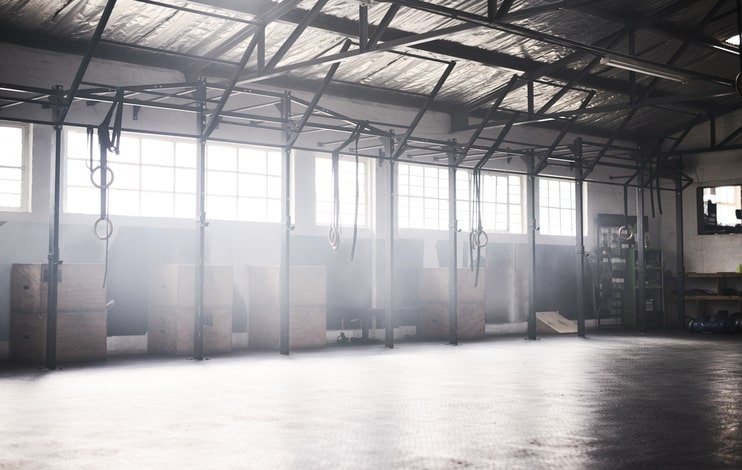





![Traits Women Find Attractive Traits Women Find Attractive (And How to Score Yourself) [PART 1: Physical Aspects]](https://lifemathmoney.b-cdn.net/wp-content/uploads/2025/11/Traits-Women-Find-Attractive-1.jpg)






















